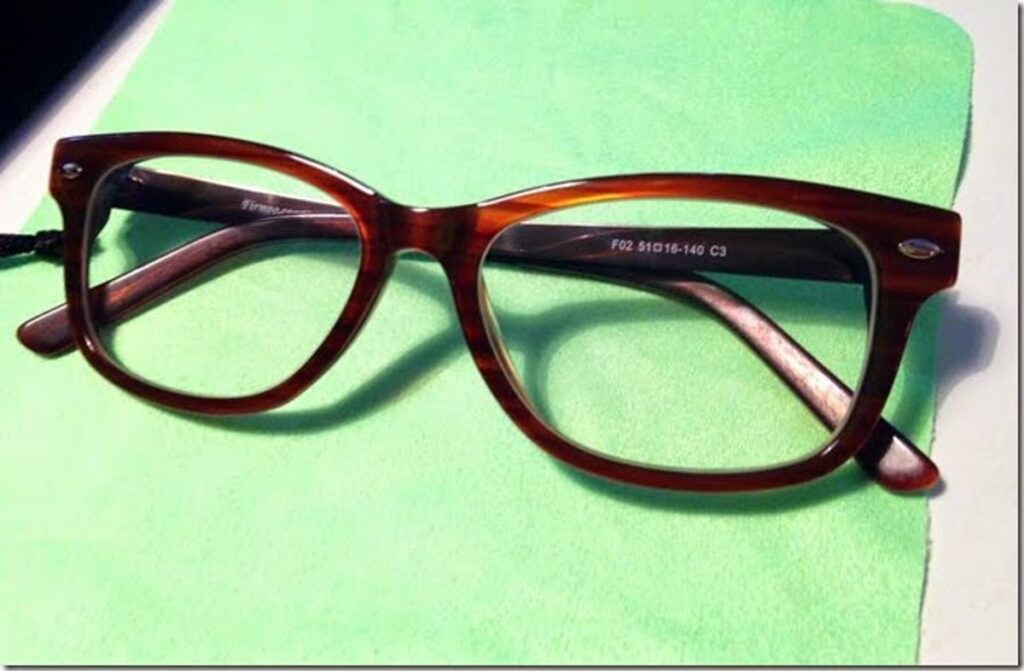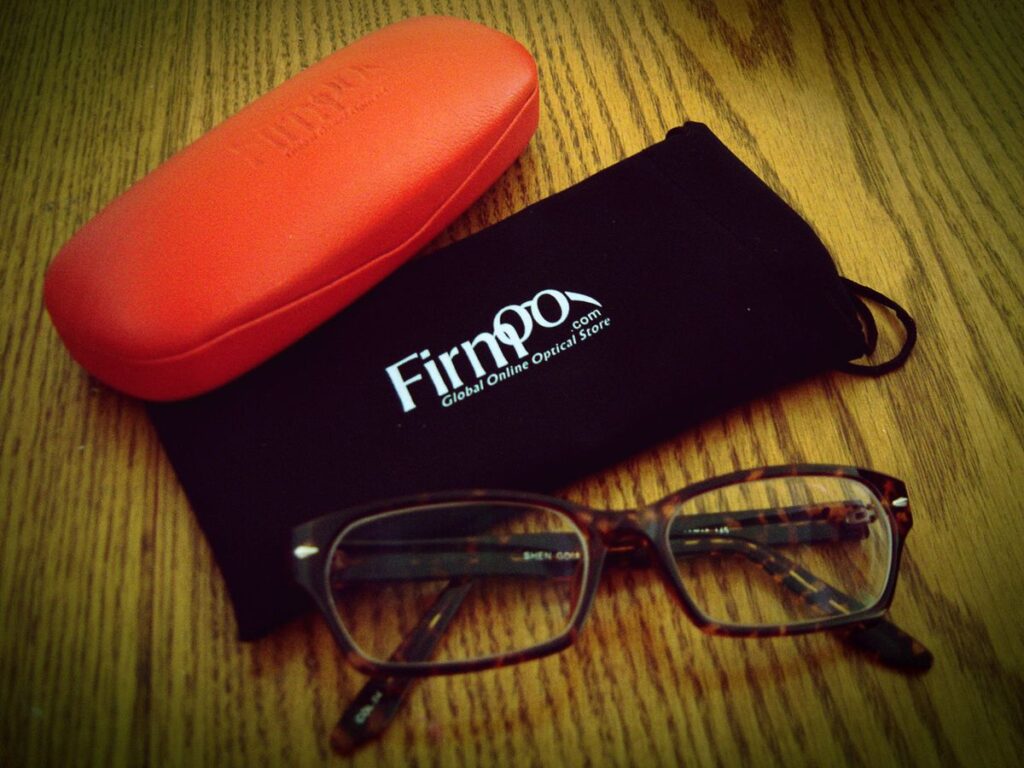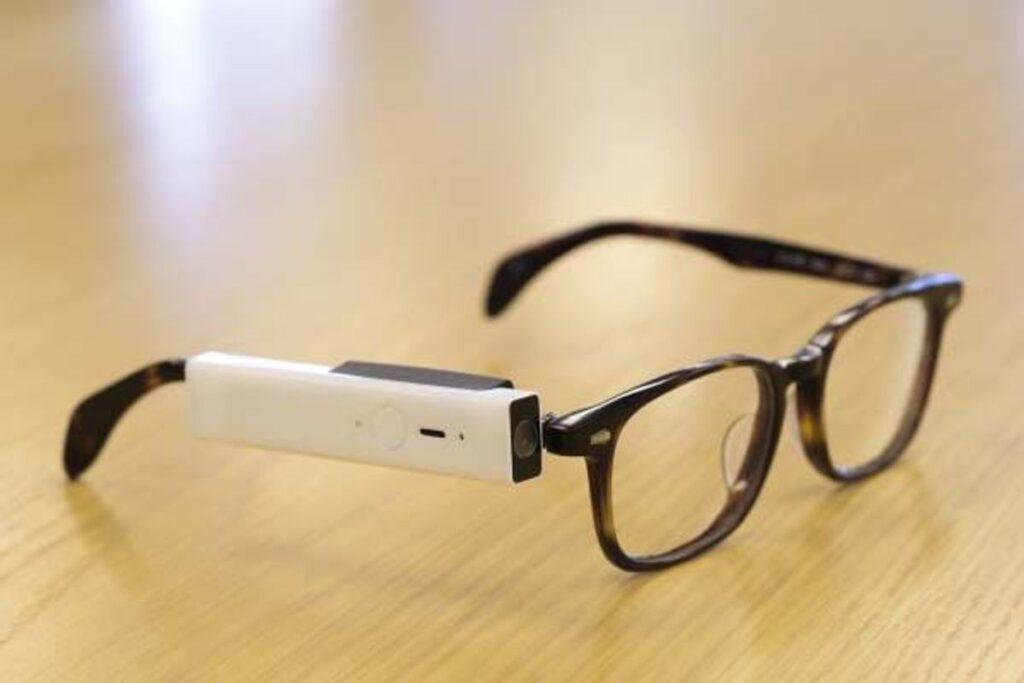The advent of eCommerce has transformed various industries, and the eyewear sector is no exception. The shift from traditional brick-and-mortar stores to online platforms has revolutionized the way consumers shop for glasses. This article delves into the burgeoning world of eyeglasses eCommerce, exploring the evolution of shopping experiences, the impact of augmented reality (AR) and virtual reality (VR) technologies, and the strategies for navigating product selection and customer service online. We also examine the role of social media and brand presence in driving online sales and customer engagement.
Key Takeaways
- The transition from physical stores to digital storefronts has made shopping for eyewear more convenient and accessible, with companies like National Vision Holdings leading the charge with a variety of online retail brands.
- Virtual try-on technology, as utilized by Warby Parker and Moscot with Perfect Corp’s AR tools, is revolutionizing the online eyewear shopping experience by allowing customers to preview how glasses look on their faces.
- Consumers can navigate the extensive selection of eyewear products online, including various types of glasses, sunglasses, and contact lenses, while understanding the importance of accurate measurements for a proper fit.
- Online eyewear platforms offer comprehensive customer support services, including assistance with frame measurement, pupilary distance, and booking appointments, all underscored by clear terms and privacy policies.
- Social media platforms like Facebook, YouTube, and Instagram are crucial for building brand narratives, engaging customers, and leveraging influencers, which collectively enhance the online eyewear shopping journey.
The Evolution of Eyewear Shopping: From Brick-and-Mortar to Digital Storefronts

The Rise of Eyeglasses eCommerce
The landscape of eyewear shopping has undergone a significant transformation with the advent of eCommerce platforms. These digital storefronts offer a convenient and expansive shopping experience, allowing customers to browse through extensive collections of eyeglasses from the comfort of their homes. The shift from physical stores to online shopping has not only reshaped consumer behavior but also the strategies of eyewear businesses.
The integration of advanced features such as virtual try-on has been pivotal in enhancing customer confidence in purchasing eyewear online. This technology simulates the in-store experience, providing a realistic preview of how different frames will look on the customer’s face.
Here’s a quick overview of the types of eyewear products available online:
- Eyeglasses for women, men, and kids
- Sunglasses in various styles
- A diverse range of contact lenses
- Reading glasses
- Accessories and eye wellness products
As the industry continues to evolve, eyewear eCommerce platforms are becoming increasingly sophisticated, offering personalized services and support to ensure a seamless shopping journey.
Comparing Online and Offline Eyewear Shopping Experiences
The shift from traditional brick-and-mortar stores to online eyewear platforms has introduced a new dynamic in consumer shopping behavior. Online shopping offers convenience and a broader selection, while offline stores provide a tactile experience and personal service. Here’s a quick comparison:
- Convenience: Online stores are accessible 24/7, eliminating the need for travel and allowing for easy comparison across brands and styles.
- Selection: Digital storefronts often have a larger inventory, showcasing a wide range of products that might not be available in physical stores.
- Personal Service: Brick-and-mortar shops offer the advantage of face-to-face interactions with opticians for personalized advice and adjustments.
- Immediate Gratification: Physical stores allow customers to walk out with their purchase, whereas online orders require shipping time.
Despite these differences, the line between online and offline is blurring. AR and VR technologies are being leveraged to bridge the gap between the two, offering virtual try-on features and interactive product demos that mimic the in-store experience. Warby Parker, for instance, has been successful in reducing consumer uncertainty and frequent returns through its virtual reality services.
The integration of digital try-on and easy returns policies has made online eyewear shopping a more viable option for many consumers. However, the continued success of offline eyewear retailers suggests that a hybrid model, combining the strengths of both worlds, may be the future of eyewear shopping.
The Impact of Digital Transformation on Traditional Eyewear Retailers
The digital transformation has ushered in a new era for traditional eyewear retailers. The integration of advanced technologies such as AI, AR, VR, and predictive analytics has redefined the shopping experience, offering personalization, convenience, and immersive interactions. This shift has not only kept these retailers relevant but has also positioned them at the forefront of industry innovation.
- Enhanced Product Visualization
- Immersive Storytelling and Brand Building
- Reduced Likelihood of Returns
By leveraging these technologies, traditional retailers are transforming prospects into loyal customers, capturing better engagement and driving growth. However, they face challenges such as ensuring privacy, managing integration complexities, and providing accessible experiences to all users. As the eCommerce landscape expands, staying competitive requires continuous innovation and adaptation to emerging trends.
Virtual Try-On Technology: Revolutionizing the Online Eyewear Experience

How AR and VR are Changing the Way We Shop for Eyeglasses
The eyewear industry is undergoing a digital revolution with the integration of AR and VR technologies. These advancements are not just gimmicks; they are reshaping the consumer experience in profound ways.
- AR and VR reduce the likelihood of returns by providing a more accurate representation of products.
- Virtual showrooms and pre-purchase trial surveys enhance consumer confidence and reduce purchase hesitation.
By providing interactive, personalized, and immersive experiences, ecommerce brands are driving growth, increasing customer satisfaction, and setting new industry standards.
Immersive storytelling and brand building through these technologies allow brands to build emotional connections with customers. The result is a shopping experience that is not only more engaging but also more efficient and satisfying.
Case Studies: Warby Parker and Moscot’s Use of Virtual Fitting Rooms
Warby Parker and Moscot have embraced virtual fitting room technology, setting a benchmark in the eyewear eCommerce space. Warby Parker’s virtual reality service, available on its website and mobile app, utilizes AR to simulate how different eyeglass frames will look on a customer’s face. This immersive pre-purchase experience has been instrumental in reducing consumer uncertainty and minimizing returns.
Moscot, leveraging Perfect Corp’s technology, offers a similar feature that allows customers to visualize eyewear on their faces using their device’s camera. This AR experience is not just a tool for visualization but also a means of engaging customers more deeply with the brand.
The integration of virtual eyewear fitting technology by these companies exemplifies a shift towards a more personalized and interactive shopping journey. It underscores the potential of AR to revolutionize eyewear shopping with personalized recommendations, enhanced engagement, and increased platform interaction, reshaping the retail landscape for a tailored experience.
The success of virtual try-on features in reducing returns and increasing customer satisfaction is a testament to the transformative power of AR in retail.
The Future of Eyewear Shopping: Predicting Trends in AR and VR
As we peer into the future of eyewear shopping, the integration of Augmented Reality (AR) and Virtual Reality (VR) stands out as a transformative force. The immersive capabilities of these technologies are poised to redefine the customer experience, offering a virtual fitting room that rivals the precision of an in-person visit.
The benefits of AR and VR in eyewear eCommerce are multifaceted:
- Enhanced Product Visualization: Shoppers can see how glasses look and fit without stepping into a store.
- Personalized Try-On Experiences: Virtual try-ons cater to individual preferences and facial features.
- Immersive Storytelling: Brands can create engaging narratives that resonate with customers on a deeper level.
The reduction in returns due to more accurate product representation is a testament to the effectiveness of AR and VR in online eyewear shopping.
Looking ahead, we can anticipate a surge in eCommerce brands leveraging AR/VR for growth, with a focus on:
- Continuous improvement in the realism of virtual try-ons.
- Expansion of interactive product demos that go beyond mere visualization.
- Development of more sophisticated algorithms for personalized recommendations.
The trajectory for AR and VR in eyewear eCommerce is clear: a more engaging, personalized, and confident shopping journey for consumers worldwide.
Navigating the Product Maze: A Guide to Online Eyewear Selection

Understanding the Different Types of Eyewear Products Available
The online eyewear market offers a diverse range of products to cater to different needs and preferences. Navigating this variety is crucial for finding the perfect pair of glasses or lenses. From stylish frames to specialized lenses, the options are extensive.
For eyeglasses, consumers can choose from categories such as women’s, men’s, and kid’s eyeglasses, with further subdivisions like ‘All’, ‘New’, and ‘Kathryn’s Choice’. Reading glasses are also a popular category, catering to those who need magnification for close-up tasks.
Sunglasses come in various shapes and colors, including aviators, cat-eye, and round sunglasses. They can be searched by gender (ladies, men, unisex, kids) or by color (black, blue, beige, etc.).
Contact lenses offer choices in terms of wear duration—dailies, two weeks, monthlies, six months—and type, such as clear, colored, toric (for astigmatism), and multifocal.
Accessories and wellness products complement the eyewear selection, with items like eyewear accessories, contact lens solutions, eye drops, and even eye masks.
Innovative eyewear eCommerce solutions like Lenskart & Ray-Ban are transforming the optical industry with features like virtual try-ons and sustainable practices, enhancing customer experience and accessibility.
How to Choose the Right Eyeglasses and Sunglasses Online
Choosing the right eyeglasses or sunglasses online can be a seamless process with the right approach. Online retailers offer sophisticated filtering options for eyewear, including size, style, and material. Fit guarantees and advanced algorithms enhance the virtual shopping experience for finding the perfect glasses. Here’s a simple guide to help you navigate the selection process:
- Determine your face shape and what frame styles complement it.
- Consider the frame material that suits your lifestyle and comfort.
- Look for UV protection levels in sunglasses for adequate eye safety.
- Pay attention to the lens coatings and additional features like anti-glare.
- Utilize virtual try-on tools to see how the frames look on your face.
- Check the return policy in case the eyewear doesn’t meet your expectations.
When selecting eyewear online, it’s crucial to understand the importance of accurate frame measurement and pupillary distance to ensure a proper fit.
Remember, the goal is to find eyewear that not only looks great but also feels comfortable and meets your vision needs. With the convenience of online shopping, you have the luxury of browsing through extensive collections and comparing different options from the comfort of your home.
The Importance of Accurate Frame Measurement and Pupilary Distance
When selecting eyewear online, the accuracy of frame measurement and pupillary distance (PD) is paramount. These measurements are critical to ensuring that your glasses fit comfortably and that the lenses align correctly with your eyes, which is essential for clear vision.
- Take Accurate Measurements: It’s important to measure the frame’s width, bridge, and arm length, as well as your own PD. Many online retailers provide guides on how to do this.
- Use Clear Size Charts: Retailers should offer size charts that match frame measurements to head sizes. This helps in finding the perfect fit.
- Model Sizes as Reference: Knowing the size of the model’s frames can give you a better idea of how the glasses might look on you.
Ensuring that these measurements are precise can greatly enhance your comfort and the effectiveness of your eyewear. Inaccurate measurements can lead to discomfort, headaches, and suboptimal vision correction.
Buying prescription eyewear online offers convenience, but it’s crucial to ensure that the measurements are accurate for both comfort and style. Many platforms now offer home trials and lens customization options to facilitate this process.
Customer Support and Services: Enhancing the Online Shopping Journey

Navigating Support Resources for a Seamless Purchase
In the digital age, customer support has evolved to become a cornerstone of the online shopping experience. Real-time support is not just helpful; it’s essential, especially when customers cannot find the information they need in FAQs or product guides. Implementing Live Chat Support can significantly enhance the customer journey, providing immediate assistance and guidance.
- Implement Live Chat Support: Integrate services like LiveChatAI for robust, real-time customer interaction.
- Survey Customers Post-Purchase: Gather feedback to improve the shopping experience.
- Incorporate Feedback Channels: Ensure customers have easy access to provide feedback.
- Address Common Issues Proactively: Identify and resolve common issues to prevent future problems.
Advanced eCommerce customer experience analysis technology has streamlined the buying process, making it more convenient and efficient. Features such as one-time checkout, stored payment methods, and automatic reordering have significantly reduced friction and improved retention rates.
Educational content is also a key component of support. Sharing guides and videos on product pages or through QR codes on packaging can empower customers with the knowledge they need to make informed decisions. For instance, Rare Beauty’s “how to use” button on product pages offers customers a short and understandable guide, enhancing their ability to use the product effectively.
Booking Appointments and Accessing Professional Assistance Online
In the digital age, accessing professional assistance for eyewear has become a streamlined process. Customers can book appointments with optometrists and eyewear specialists directly through the eCommerce platform. This convenience allows for a personalized shopping experience, even from the comfort of one’s home.
The process typically involves the following steps:
- Selecting the ‘Book Appointment’ option on the website
- Choosing a convenient date and time from the available slots
- Providing necessary personal and eye health information
- Confirming the appointment and receiving a notification
It’s important to note that online platforms often offer additional support resources. These may include live chat services, detailed FAQs, and instructional videos that guide customers through the selection and purchasing process. By leveraging these tools, shoppers can make informed decisions and address any concerns promptly.
The integration of augmented reality try-on tools and seamless online ordering systems has significantly enhanced the customer experience, making it more efficient and enjoyable.
Understanding Terms, Privacy, and Promo Policies in Eyewear eCommerce
When shopping for eyewear online, it’s crucial to understand the terms and conditions that govern your purchase. Knowing the privacy policy is essential to ensure your personal and payment information is secure. Promo policies can also significantly affect the cost and value of your purchase, so it’s important to be aware of any ongoing promotions or coupons.
- Terms of Service: Outlines the rules and regulations for using the platform.
- Privacy Policy: Details how your information is collected, used, and protected.
- Return Policy: Specifies the conditions under which items can be returned.
- Promo Terms: Explains the requirements and limitations of promotions and coupons.
When engaging with eyewear eCommerce platforms, always take the time to review these policies carefully to avoid any misunderstandings or issues post-purchase.
Leveraging Social Media and Brand Presence in Eyewear eCommerce

Building a Brand Narrative on Platforms like Facebook, YouTube, and Instagram
In the realm of eyewear eCommerce, building a compelling brand narrative is crucial for connecting with customers on a deeper level. Social media platforms like Facebook, YouTube, and Instagram serve as the canvas for this storytelling, allowing brands to weave engaging tales that resonate with their audience.
Successful brands understand the power of leveraging storytelling to drive customer engagement. For instance, a brand might share the journey of how their products are crafted, emphasizing the personalized experiences and eco-friendly practices that appeal to today’s conscious consumers. This not only fosters a sense of community but also positions the brand as a leader in the future of optical retail.
By consistently delivering authentic content that aligns with their values, brands can cultivate a loyal following that not only believes in their products but also in what they stand for.
User-generated content is another potent tool in the social media arsenal. Encouraging customers to share their own stories and experiences with the brand’s products can amplify reach and credibility. This peer-driven narrative often carries more weight than traditional advertising, as it comes from a place of genuine user satisfaction and trust.
Engaging with Customers through Social Media Marketing
In the realm of eyewear eCommerce, engaging with customers through social media marketing is not just about promotion, but about creating a community and a brand narrative that resonates with the audience. Platforms like Facebook, Instagram, and Twitter serve as a stage for storytelling, where brands can share their values, customer testimonials, and even leverage user-generated content to build trust and authenticity.
- Incorporate Social Media Messaging: Utilize tools like Facebook Messenger, WhatsApp Business, or Twitter Direct Messages to engage with customers in real-time.
- Collect Customer Feedback: Use social media platforms to gather insights on common return reasons and improve customer satisfaction.
- Leverage Storytelling: Share compelling brand stories to drive customer engagement and foster a strong brand-customer relationship.
Embracing social media marketing in the eyewear industry is not just about selling a product; it’s about crafting an experience that customers want to be a part of and share with others.
The Role of Influencers and Customer Reviews in Online Eyewear Sales
In the competitive landscape of eyewear eCommerce, influencers and customer reviews have become pivotal in shaping consumer decisions. Brands that effectively engage with influencers and leverage positive customer feedback can see a significant impact on their sales and brand reputation.
- Influencers, often with substantial followings on platforms like Instagram and Facebook, can sway public opinion by showcasing how eyeglasses fit into lifestyle and fashion trends.
- Customer reviews serve as social proof, providing prospective buyers with real-world insights into product quality and customer satisfaction.
The symbiotic relationship between influencers’ endorsements and authentic customer reviews creates a powerful marketing dynamic that can propel a brand’s visibility and credibility.
Understanding the influence of these elements is crucial for eyewear brands aiming to stand out in a crowded online market. By fostering a community around their products and encouraging user-generated content, companies can build trust and loyalty among consumers.
In the competitive world of eyewear eCommerce, establishing a robust online presence is crucial. By leveraging social media platforms, brands can connect with a wider audience, showcase their unique styles, and drive traffic to their online stores. To stay ahead of the curve, visit our website and explore OPTIGRID, our innovative platform designed to enhance your brand’s digital footprint. Sign in today and start transforming your eyewear business with the power of social media.
Conclusion
As we navigate the evolving landscape of eyeglasses eCommerce platforms, it’s clear that the integration of AR and VR technologies is revolutionizing the way consumers shop for eyewear online. Companies like Warby Parker and Moscot are at the forefront of this innovation, offering virtual try-on features that enhance product visualization and consumer confidence. The convenience of online shopping, coupled with the ability to virtually ‘try before you buy,’ addresses one of the biggest challenges in the eyewear industry—ensuring the right fit and style. With the continued growth of AR/VR capabilities and the commitment of major players to make eye care and eyewear more affordable and accessible, the future of online vision shopping is bright. The industry’s embrace of these technologies is not just a trend but a significant step towards an immersive and customer-centric shopping experience that is likely to set the standard for years to come.
Frequently Asked Questions
How has the shopping experience for eyewear evolved with the advent of eCommerce?
The shopping experience for eyewear has transformed from traditional brick-and-mortar stores to convenient digital storefronts. With the rise of eCommerce, customers now have access to a wider range of products and can shop for eyeglasses from the comfort of their homes, often with the aid of virtual try-on technology.
What is virtual try-on technology and how is it used in eyewear eCommerce?
Virtual try-on technology uses AR (Augmented Reality) and VR (Virtual Reality) to allow customers to see how different eyeglasses and sunglasses would look on their faces. This technology enhances the online shopping experience by providing a realistic preview of the products, as seen with Warby Parker and Moscot’s virtual fitting rooms.
How can I ensure that the eyeglasses I order online will fit properly?
To ensure proper fit, it’s important to have accurate frame measurements and pupilary distance. Many online eyewear platforms provide guides on how to measure these or offer services to assist with getting accurate measurements for a personalized fit.
What kind of customer support can I expect from an online eyewear retailer?
Online eyewear retailers typically offer extensive customer support, including resources for seamless purchases, the ability to book appointments, and access professional assistance. They also provide clear information on terms, privacy, and promo policies.
How do eyewear brands leverage social media to enhance their eCommerce presence?
Eyewear brands build their narrative and engage with customers through platforms like Facebook, YouTube, and Instagram. They use social media marketing and influencers to connect with their audience, share their brand story, and showcase customer reviews.
What are the benefits of AR and VR in the online purchase of eyewear?
AR and VR technologies offer benefits such as enhanced product visualization, the ability to try products virtually before purchase, and an immersive shopping experience. This leads to increased consumer confidence, reduced hesitation in purchasing, and potentially lower return rates.

I am a seasoned software engineer with over two decades of experience and a deep-rooted background in the optical industry, thanks to a family business. Driven by a passion for developing impactful software solutions, I pride myself on being a dedicated problem solver who strives to transform challenges into opportunities for innovation.

